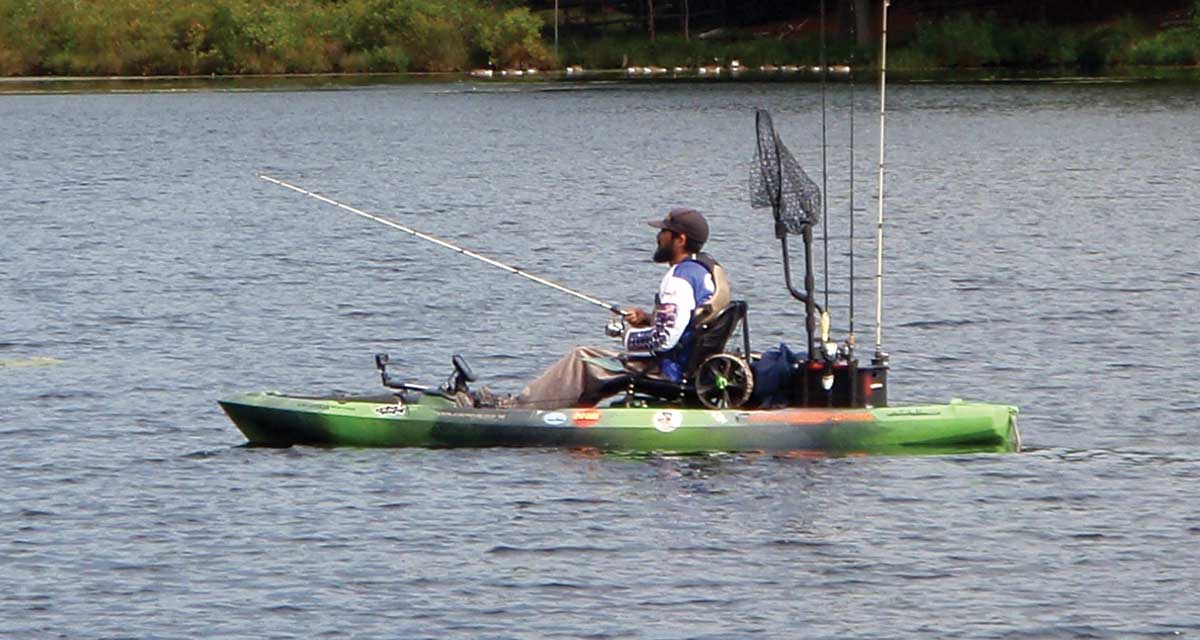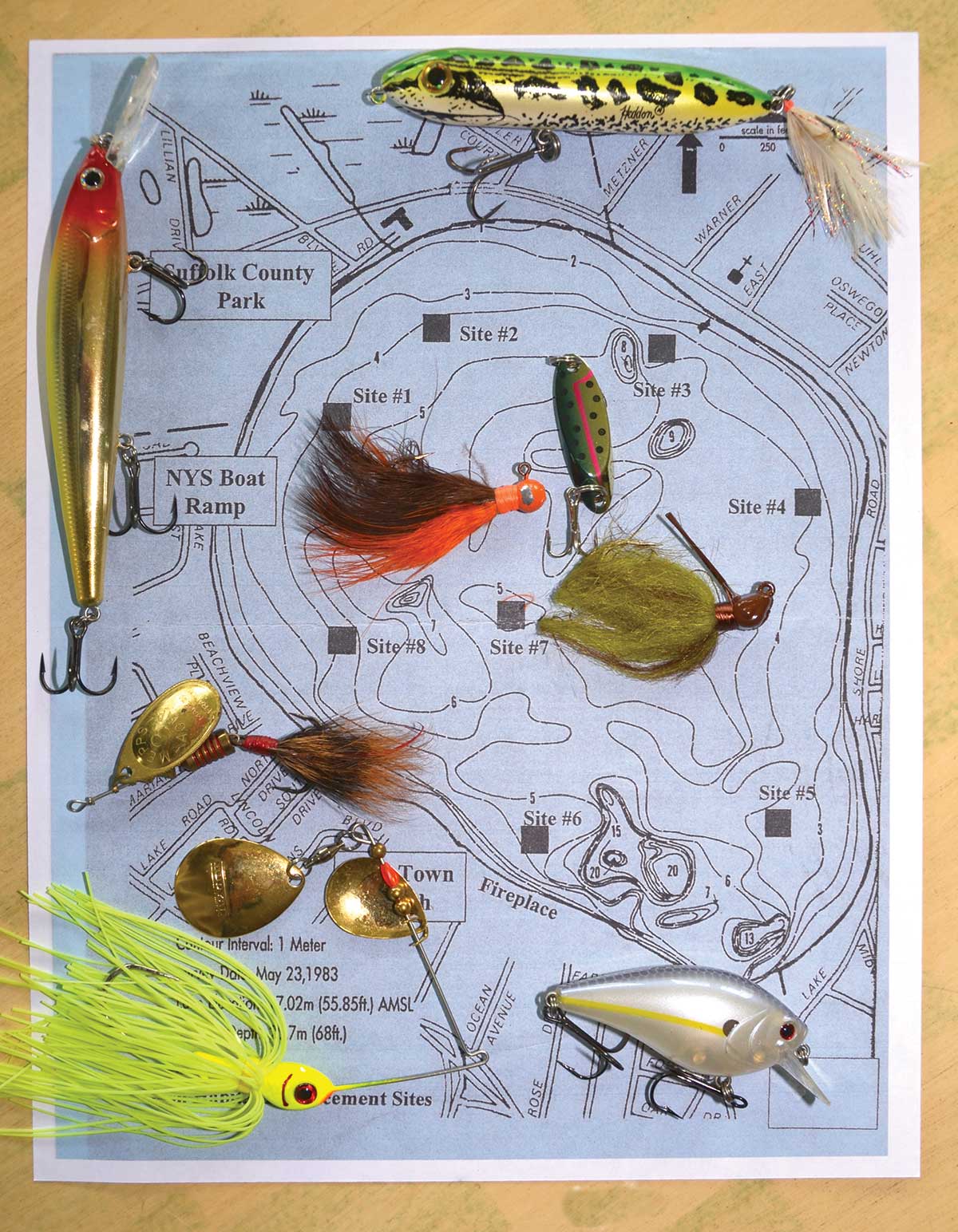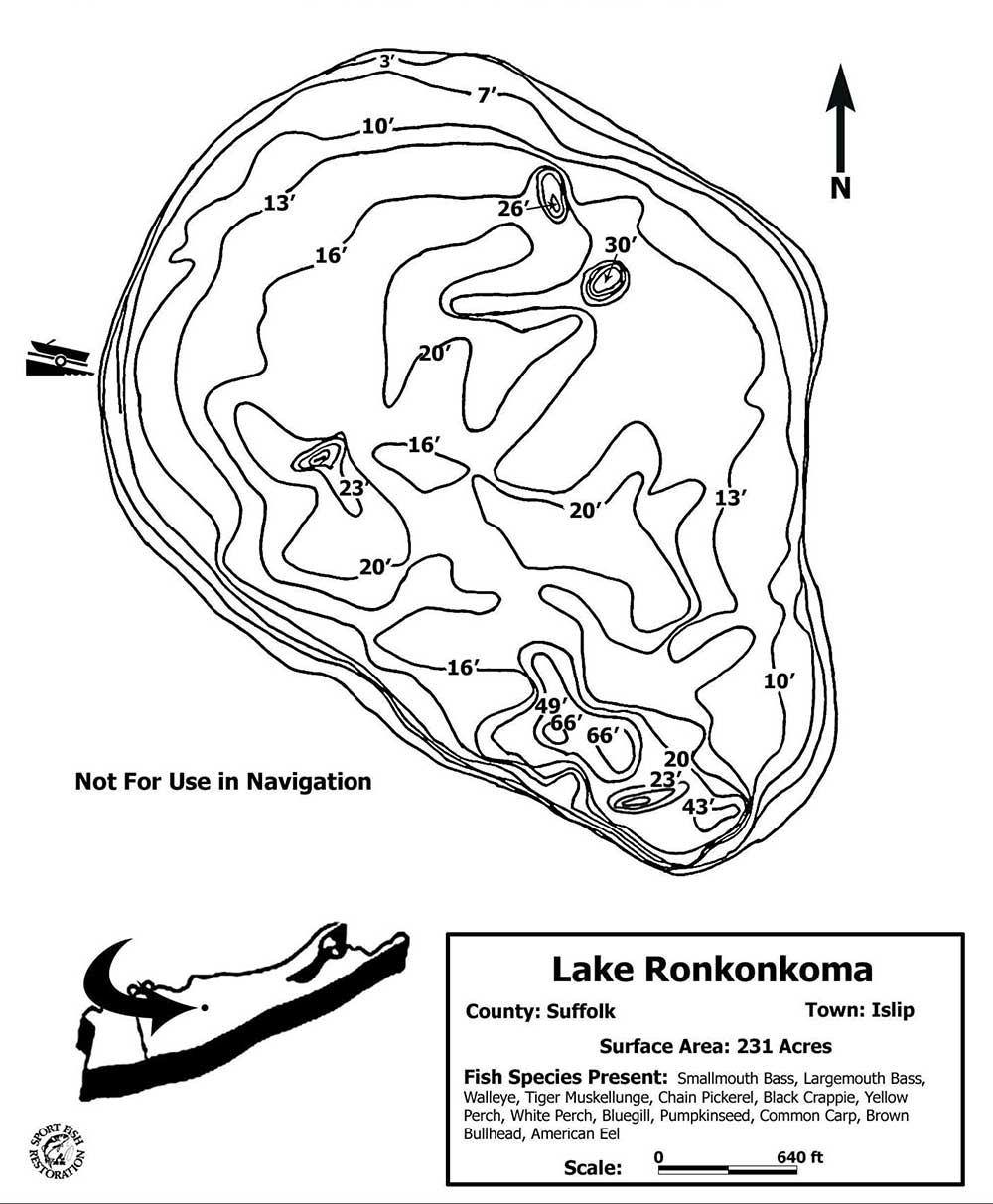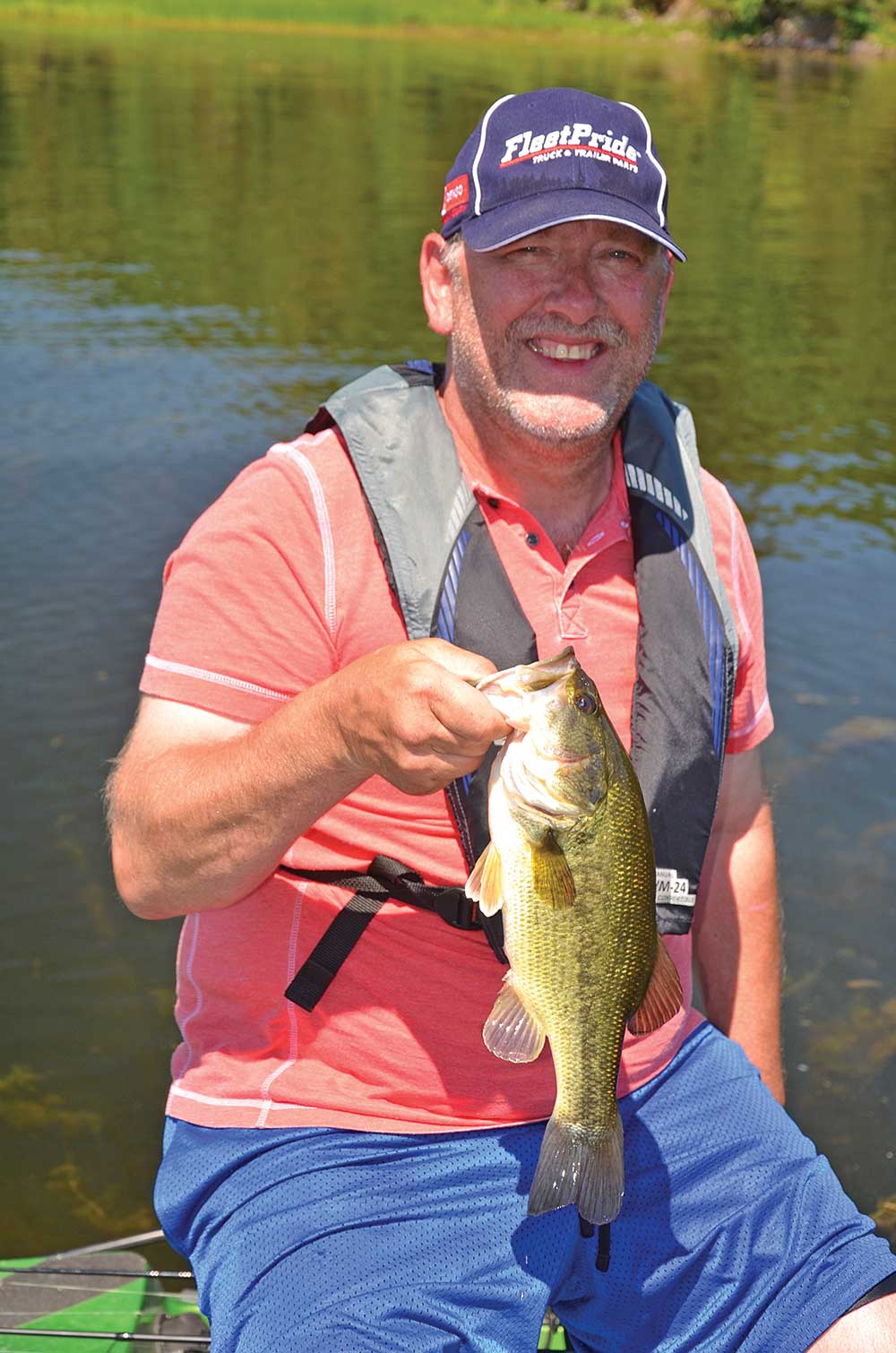
Whether you like to walk, boat or kayak, opportunities abound on the Island’s largest body of freshwater.
I know many anglers that fish Long Island and when I ask them their favorite freshwater hotspot, the answers I get vary depending on the species. For trout, I always hear about the Connetquot River State Park, Carmans River or Belmont. For a hot panfish bite, Argyle Lake, Artist Lake or the Massapequa chains pop up. For bass, the talk turns to Blydenburgh, Massapequa again, and the Peconic River. The amazing part is I almost never hear anything about Lake Ronkonkoma – the largest lake on Long Island.
History Lesson

Before we get into the fishing, let’s take a look at what type of lake, Lake Ronkonkoma is. As mentioned, the big pond is the largest lake on Long Island and is considered one of the eight kettle hole bodies of water we have on the Island. The lake has a circumference of about 2 miles and varies in depth with its deepest point of 65 feet located on the southwest side near Brookhaven Town Beach. A few holes of 20 to 30 feet of water are scattered around the lake, with most of the remainder 16 feet or under. These depths are a far cry from typical Long Island ponds or lakes that rarely exceed 10 feet in depth. The lake was originally formed by receding glaciers, thus its kettle hole designation.
To improve habitat in the lake, on a cold December morning back in 2002, eight artificial reefs, consisting of 150 weighted hardwood tree stumps were deposited in the lake via Army Blackhawk helicopters. I was there for this and it was quite a sight, with all of those on hand excited about the prospect of what these new additions would do to improve fishing in the lake. The stumps were ideal for providing shelter to fingerlings and baitfish, which would then in turn attract larger gamefish, in this case bass. This project would not have been possible if not for help from the many agencies and organizations that contributed to the project, among them: NY Department of Conservation, DOT, New York State Division of Military and Naval Affairs, Long Island Bassmasters and Suffolk County Department of Parks, Recreation and Conservation.
What to Expect
I have been fishing Lake Ronkonkoma since I was 14 years old. It was another one of those drop-off points my mom would leave me at for hours on end. Fast forward to today however, and I prowl the lake with my 19-foot Javelin (with the motor bagged), or occasionally walk the shoreline. Walking the shoreline offers several advantages, and with water levels down, you can access the entire lake.
 My best bass in the lake was a fat 5-pounder caught many years ago, but in recent years I have found largemouths to 3 pounds and smallmouths to 2 pounds. On the walleye front, fish to 16 inches are common, with some healthier fish to 5 and 6 pounds recorded every season. The tiger muskies, which were introduced to the lake many years ago, are pretty much gone from the scene at this point, although a large tiger was pulled through the ice several years back. Crappie and yellow perch, along with other panfish, continue to provide good angling opportunities in the lake’s shallower areas.
My best bass in the lake was a fat 5-pounder caught many years ago, but in recent years I have found largemouths to 3 pounds and smallmouths to 2 pounds. On the walleye front, fish to 16 inches are common, with some healthier fish to 5 and 6 pounds recorded every season. The tiger muskies, which were introduced to the lake many years ago, are pretty much gone from the scene at this point, although a large tiger was pulled through the ice several years back. Crappie and yellow perch, along with other panfish, continue to provide good angling opportunities in the lake’s shallower areas.
When it comes to locating bass, one of my favorite areas is along the western shore at about mid-lake. One of the aforementioned stump fields lies in about 16 feet of water, or less depending on the lake’s current water level. Given the low water levels, I’m guessing it lies in about 10 to 12 feet of water at the present time. The spot lies fairly close to one of the deep holes in about 30 feet of water. Shift your location to nearby deeper water and you’re likely to encounter some action with smallmouths. Another hotspot is on the northeast side where another log field rests in about 14 feet of water. It too is adjacent to a deeper hole, in this case measuring 25 feet of water. Both of these areas will produce largemouths on crankbaits, Senko worms, and spinnerbaits. For smallmouths, a small swimbait, jig or drop shot is often a better choice.

If you do not have access to a boat, walking the shoreline can offer a great opportunity, especially if the water level is up. Lately however, the water has been down, so walking and casting with search baits is your best option. Lipless crankbaits, spinnerbaits or inline spinners are good choices. Once you find a fish or two, crankbaits, large profile jigs and jerkbaits will aid in landing a few larger fish.
If you are looking for walleye, fishing at night will give you a great advantage. And while the night bite is tough to beat, early mornings with white crankbaits can be a show stopper as well. The best walleye location in my opinion is the southeast side where you will find broken rubble on the shoreline. This rubble is also in the lake within casting distance of the shoreline. The rougher bottom makes for some ideal walleye habitat.
Panfish can be found near the old Bavarian Inn parking lot and county beach on the north side of the lake.
Lake Ronkonkoma can provide some good fishing for those willing to take the time to learn it, yet remains very much underutilized – despite relatively easy access via three different town parks. Islip, Smithtown and Brookhaven towns, and Suffolk County all maintain parks along the lake’s shoreline. There is also a New York DEC launch ramp that can accommodate anywhere from 10 to 15 trailers. On your next outing, give the big pond a shot – you might be pleasantly surprised.


